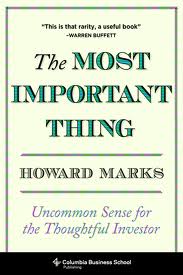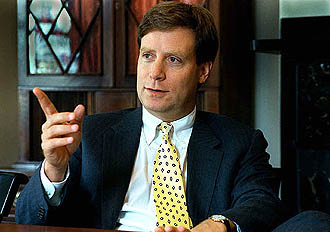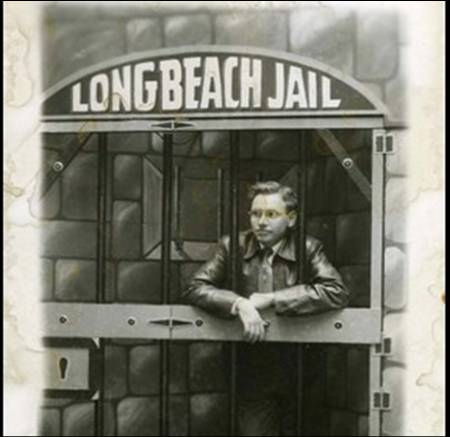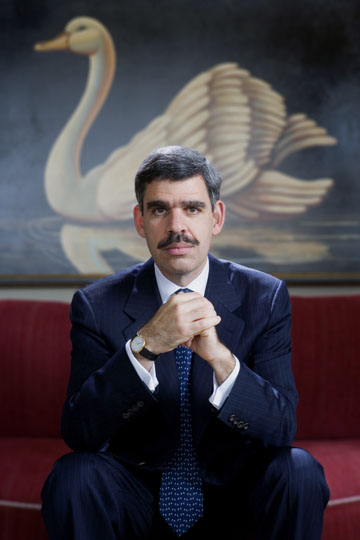Many thanks to Adam Bain of CommonWealth Opportunity Capital for tipping PM Jar about this chapter in Steve Drobny’s Invisible Hands.
“The Pensioner” interviewed “runs a major portfolio for one of the largest pension funds in the world.” He seems to define risk (for the most part) as volatility. Regardless of whether you agree with this definition, the chapter is a worthwhile read because he brings the “risk” discussion to the forefront of the portfolio construction and management process – whereas many currently approach and manage risk as a byproduct and afterthought.
Oh, and he also provides some very unique thoughts on liquidity and illiquidity.
Risk, Expected Return, Diversification
While focusing too much on the (desired) expected return, say 8% per annum, investors lose sight of the actual level of “risk” assumed in the portfolio. The Pensioner believes that “investors on average, are led astray at the beginning of the portfolio construction process by focusing on a return target…the level of risk assumed to achieve that target becomes secondary.”
Currently, it is “common practice” to allocate capital “based on dollar value as opposed to allocating based on a risk budget. Oftentimes, this can lead to asset allocations that appear diversified but really are not…The goal is to build a portfolio that produces the maximum return per unit of risk.” Some may refer to this as maximizing risk-adjusted return.
A good risk management process should incentivize employees to be “cognizant” of risk, and to focus on “risk-adjusted returns, as opposed to just nominal returns…” and “…trade off between the marginal risk consumed by an investment and the investment’s expected return.” This concept is akin to a business’ focus on net income or cash flow, rather than top line revenues.
“Portfolio managers get themselves into trouble when they look at opportunities as standalone risks. The marginal contribution to overall risk is what is most important.”
In essence, “risk needs to be treated as an input, not an output, to the investment process.”
Risk identification is not always straightforward or all that obvious. For example, certain asset classes traditionally considered “nonequity” (such as private equity, real estate, infrastructure, etc.) actually have very equity-like qualities. Fixed income and credit is “really just a slice of the equity risk premium.”
Liquidity
For those interested in the topic of liquidity and illiquidity, I highly recommend the reading of the Pensioner chapter in its entirety. He presents some very interesting and unique perspectives on how to think about both liquidity and illiquidity in a portfolio context.
Perceptions as well as actual liquidity profiles of assets can change depending on the market environment. For example, in 2008, people learned the hard way when “assets that were liquid in good times…became very illiquid in periods of stress, including external managers who threw up gates, credit derivatives whereby whole tranches became toxic, and even crowded trades such as single stocks chosen according to well-known quantitative screens.”
“Illiquidity risk needs to be recognized for what it is, which is just another risk premium amongst many.” But how do you value this risk? That’s the tricky part, with no exact answer, but fun to think about nonetheless…
“By entering into an illiquid investment, you give up the option to sell at the time of your choosing, and as a result, an opportunity cost is incurred. Illiquidity is essentially a short-put option on opportunity cost and, if you were able to estimate the likelihood and value of all future opportunities, then you could estimate the illiquidity risk premium using standard option pricing theory. Of course, this is almost impossible in practice.” So in order to think about the cost of illiquidity, we must consider opportunity cost. Sound familiar? That’s because opportunity cost is also the essential input for the theoretical valuation of cash. For that, see our post on Jim Leitner, who has some wonderfully insightful thoughts on that subject.
Illiquidity is a “negative externality.” The evidence for this claim lies in 2008, when “many liquid managers were shut down, despite excellent future prospects. This was because clients, desperate to raise capital or cut risk and unable to sell their illiquid assets, sold whatever they were able to.” Therefore, illiquidity impacted not only those assets that were illiquid, but spread to negatively impact other asset classes.
Liquidity, Trackrecord, Volatility
Ironically, the illiquid nature and lack of pricing availability of some assets actually improved the volatility profile and trackrecords of some managers due to the “artificial” smoothing provided by the delay in mark to market. So there you have it: illiquid assets can sometimes be used to game the system for both returns and volatility. Disclaimer: PM Jar is not recommending that our Readers try this at home.
Volatility
PM Jar usually does not highlight mathematical or formulaic concepts. But the unique nature of this concept merits a quick paragraph or two.
Many have characterized the events of 2008 as “nonnormal.” But the Pensioner claims that 2008 events were not “exceedingly ‘fat’ or nonnormal…rather, they exhibited nonconstant volatility…A risk system capable of capturing short-term changes in risk would have gone a long way to reduce losses in 2008.”
The book provides the following explanation for stochastic volatility:
“Stochastic volatility models are used to evaluate various derivatives securities, whereby – as their name implied – they treat the volatility of the underlying securities as a random process. Stochastic volatility models attempt to capture the changing nature of volatility over the life of the derivative contract, something that the traditional Black-Scholes model and other constant volatility models fail to address.”
Inflation
All assets respond to inflation over the long-term – for better or for worse. However, in the near-term, some assets we commonly believe to be hedges to inflation often don’t work out as expected. For example, “Real estate and equities...get hit hard by unexpected inflation because even though they have real cash flow, they are still businesses, and the central bank response to inflation is to raise rates to slow demand.”
Leverage
The term leverage generally has a negative connotation, but in his mind, there are 4 different types of leverage – some good, some bad:
- “Using leverage to hedge liabilities” – GOOD
- “Using leverage to improve the diversification of a portfolio” – GOOD
- “Levering risky positions to generate even high expected returns” – BAD
- “Using off-balance sheet hidden leverage to make risky assets even riskier (i.e., private equity)” – BAD
It’s not leverage itself that’s bad, it’s how you use it – similar to how “guns don’t kill people, people kill people.”
Accounting Leverage – the type of leverage that “shows up directly on a fund’s balance sheet,” such as margin, repo or derivative transactions.
Economic Leverage – the leverage “born indirectly by the fund through some other entity.” Examples include highly levered public securities owned by the fund, or private equity allocations that have highly leveraged underlying holdings.
Hedging
When people hedge to put a floor on near-term returns, it entails “costs to the fund over the long-term because I am essentially buying insurance on my job and billing my employer for the premium.”





















